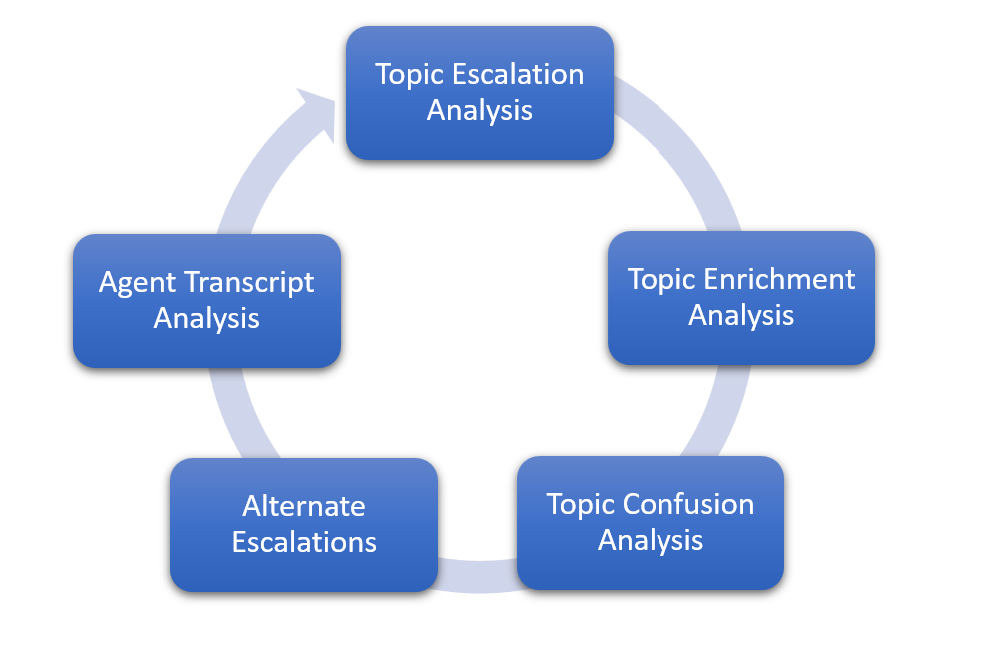Note
Access to this page requires authorization. You can try signing in or changing directories.
Access to this page requires authorization. You can try changing directories.
Return on investment (ROI) and improved customer satisfaction (CSAT) are top priorities for the organizations that implement Copilot Studio agents.
Optimizing the agent deflection rate is one of the top focus areas for organizations to achieve their business goals around ROI and CSAT, and to improve the agent's overall performance. There are major indicators in Copilot Studio that help improve agent performance, such as resolution rate, escalation rate, and CSAT.
While the metrics continue to evolve, there are several things you can do as an agent builder to improve the deflection rate of your agent. In these articles, we cover the importance of deflection in conversational AI and general techniques/considerations that are universal for optimizing deflection for agents.
Tip
In the context of conversational AI, deflection is an indicator representing the percentage of requests that are completed in a self-service fashion that would otherwise be handled by live representatives. In other words, it refers to the number of items a team avoids having to deal with as a result of automation.
Why deflection optimization?
- Better customer experience: more customers or employees can get their issues resolved by the agent instead of waiting for a human representative in chat or phone. This leads to a better customer experience and higher CSAT scores. While this helps reduce wait time, live representatives can also focus on more complex, higher-value tasks.
- Cost savings: one of the key ways the ROI of the agent is determined is by using deflection rates. Human representative call support typically costs around $5 to $10 in the contact center industry. However, an agent session that resolves a customer request costs around 50 cents. This means that higher deflection rates lead to higher cost savings.
Understanding the key components of Copilot Studio analytics to improve deflection
A basic understanding of available analytics is required to be able to determine what deflection means for your organization. The following table describes the key metrics from Copilot Studio:
| Description | Details |
|---|---|
| Total Sessions | The total number of analytics sessions within the specified time period. A conversation with an agent can generate one or multiple analytics sessions, each with their own engagement status and outcome. An analytics session begins when a user has new questions after an initial conversation completed (for example, reached the End Of Conversation topic). |
| Engagement Rate | The percentage of total sessions that are engaged sessions. An engaged session is an analytics session where a custom topic is triggered, or the session ends in escalation. Engaged sessions can have one of three outcomes—they're either resolved, escalated, or abandoned. |
| Resolution Rate | The percentage of engaged sessions that are resolved. A resolved session is an engaged session where the user receives an End Of Conversation question that asks "Did that answer your question?" and the user either doesn't respond or responds "Yes." |
| Escalation Rate | The percentage of engaged sessions that are escalated. An escalated session is an engaged session escalated to a human representative. |
| Abandon Rate | The percentage of engaged sessions that are abandoned. An abandoned session is an engaged session that isn't resolved or escalated after one hour from the beginning of the session. |
| CSAT | The graphical view of the average of CSAT scores for sessions where customers respond to an End of Conversation request to take the survey. |
These metrics need to be continuously improved to optimize the agent ROI. However, each organization might have their own definition of what deflection rate means to them. For example, an organization might consider the Abandon rate along with the Escalation rate as part of their deflection calculation, while another organization might look purely at the Escalation rate.
Despite having different definitions for a deflection rate, these metrics still provide the foundation to calculate deflection. Based on our experience with various customers, in the context of deflection, Resolution rate, and Escalation rate play a major role. Increasing the Resolution rate and reducing the Escalation rate typically has a direct result on overall agent deflection metrics.
Key techniques
